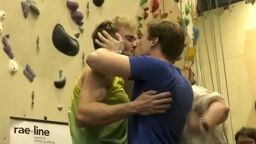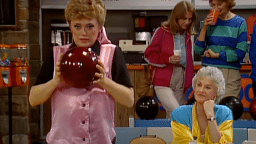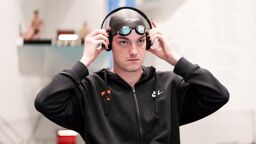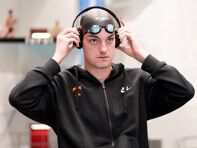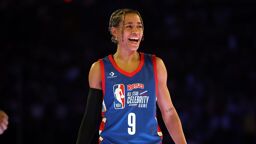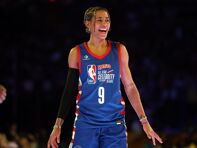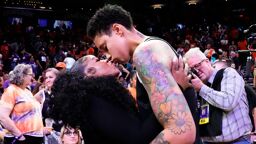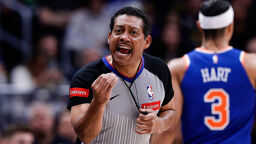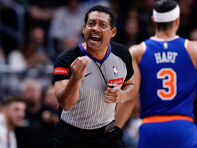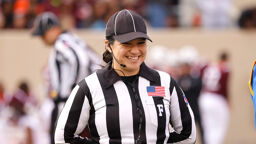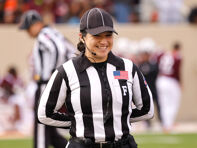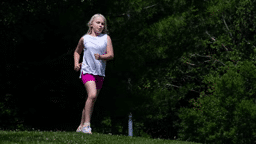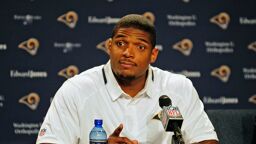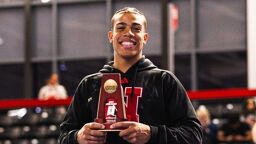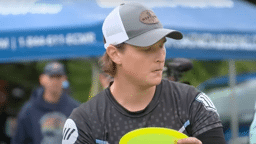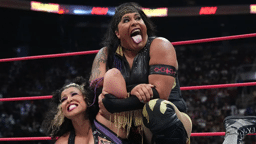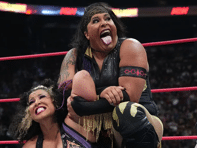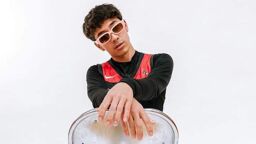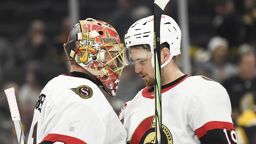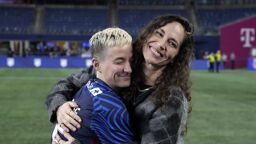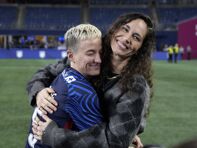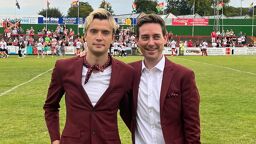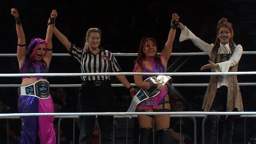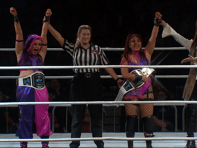(This story was published in 2005).
By: Adam de Jong (Daily Bruin Contributor)
Reprinted with permission from the Daily Bruin, the student newspaper at UCLA
Each day, gay and lesbian students on campus contemplate coming out. It shouldn’t be a surprise that some are varsity athletes. Yet this group of individuals faces a unique set of pressures.
Even at UCLA, which prides itself on being one of the most diverse and tolerant institutions in the country, there are gay and lesbian student-athletes who are scared of the consequences of revealing their sexual orientation.
Several said they are fearful they would be the victims of verbal and physical abuse if they came out to their teammates and coaches, and one alleged that his coach has threatened to dismiss any openly gay athlete from his team.
“My coach has made homophobic remarks,” said a gay varsity male athlete at UCLA, who spoke on condition of anonymity. “He said that if there were any faggots on the team he would kick them off. I know he can’t really kick anyone off the team for their sexual orientation, but I definitely feel like I would be pressured to leave.”
Of the roughly 600 student-athletes at UCLA, most have never witnessed incidents of homophobia involving their teammates or coaches. But the fact that even a few gay and lesbian Bruin athletes experience anti-gay sentiment within their respective teams is troubling to Associate Athletic Director Petrina Long, who oversees life skills and spoke on behalf of the athletic department.
“I am very surprised,” Long said. “Any professional staff should not be saying anything like this. You’re taking one person, but that doesn’t make the inappropriate comments excusable.”
While UCLA does not have a specific policy to protect its gay and lesbian athletes from homophobia, it instead groups sexual-orientation issues under a broader category of discrimination that includes race, age and gender. By adopting such a general approach, the athletic department entrusts each of its coaches with the responsibility of handling this delicate issue on a case-by-case basis.
Even if a coach promotes an accepting environment, there is no guarantee that gay or lesbian athletes will feel comfortable revealing their sexuality. Recent studies suggest that 10 percent of the population is gay, yet no male professional athlete in any of the four major sports is openly gay, and no male UCLA varsity athlete interviewed for this article is either.
The result is a group of athletes who feel forced to hide a portion of their identities.
“It’s awful I have to compromise myself to play a sport,” the anonymous UCLA athlete said. “There’s no good way to come out of the closet. There’s just bad or worse.”
Is it Harder for Athletes?
College is the time when most students celebrate their individuality. For gay and lesbian athletes, however, it’s often the reverse.
One male UCLA varsity athlete, who also wished to remain anonymous, is open with his family and friends back home, but said that he has remained in the closet with his Bruin teammates and coaches. Though he is tempted to divulge his secret, the fear that his teammates might ostracize him or even harm him physically has kept him silent.
“I could never tell my coaches or teammates, the people who I spend more time with than anybody else,” he said. “If I came out, it would affect my play on the team because everyone else would be thinking about it, and I would be worried that they were thinking about it.”
Experts said that the UCLA athlete’s predicament is not at all uncommon.
“On campus we see many homosexual students that are out at UCLA, but in the closet at home with their family,” said Ronni Sanlo, director of the UCLA Lesbian, Gay, Bisexual and Transgender Resource Center. “With athletes, it tends to be the other way around. Their family knows about their sexuality, but they will keep it a secret from their coaches and teammates.”
The two anonymous UCLA male athletes have numerous reasons why they are afraid to come out to their teammates, but both said their fears have been heightened by a slew of homophobic remarks made at practice by coaches and teammates.
Neither is willing to discourage such comments for fear that a response will raise suspicion that they are gay.
“Not every player or coach is homophobic, but they make these jokes or asinine comments as if they don’t mean anything,” said the gay male athlete who alleged his coach threatened to dismiss all gays from his team. “I cannot tell them how obnoxious they are because they would know I’m gay, and that would be a terrible way to come out.”
“The reason players or coaches make the homophobic remarks is because they don’t even think anyone on the team could be gay,” said the second gay male athlete quoted in this article.
Such quips, University of Colorado at Colorado Springs sociology Professor Jay Coakley said, are a product of male athletes reaffirming their masculinity.
Because of the dynamic of male sports, many athletes link sexual orientation to performance, so being gay is considered a detriment.
“If someone came out, people would associate a stigma with him,” a straight male varsity athlete at UCLA said. “All of a sudden they wouldn’t be this tough, hard-nosed player, but this weak feminine athlete.
“It’s unfortunate that’s the case, but there’s not a lot of room for homosexuality or femininity (in male sports).”
While much of society has made great strides over the past two decades to outlaw anti-gay behavior, many experts, such as UCLA LGBT Center official Steven Leider, agree that sports remains one of the last bastions of homophobia. They point to the frequent use of slurs and lack of openly gay major athletes as proof that sports have not made the same sort of progress as other facets of society.
But Long, who came to Westwood nine months ago from UC Irvine, where she worked for current UCLA Athletic Director Dan Guerrero, disagrees, characterizing the notion that sports are worse than any other groups as a myth.
“I don’t think athletics is necessarily that separate from what you see in society,” she said. “I think athletics is probably a microcosm of what you see elsewhere. Sports has made a lot of progress.”
This is not a sentiment shared by the gay athletes interviewed for this article.
Not only do they say they’re afraid in the huddle, on the court or in the locker room, but because they are among the most recognizable people on campus, they tend to keep a part of themselves hidden even in social settings.
“Being a gay athlete limits me socially because I cannot date or even socialize with other gay men without being outed,” said the second gay male athlete quoted in this article. “While other students are meeting people at a party or just relaxing with friends, I have to constantly worry about what people think. Sometimes I wish that someone on my team would just find out that I (am) gay so I wouldn’t have to worry about it anymore.”
UCLA Against the Rest
Homophobia, by no means, is unique to UCLA.
In fact, even the Bruin athletes who have been the victims of alleged discrimination suggested that the climate for gay and lesbian student-athletes is far better in Westwood than it is at most other institutions.
“The reality is that while homophobia exists on my team, it is not nearly as bad at UCLA as it is other places,” said the gay male student-athlete who alleged that his coach threatened to dismiss all gays from the team.
“All you have to do is look at Bruin Walk to realize how ridiculously (politically correct) the school is. If there’s homophobia here, it must be much worse in other parts of the country.”
The examples of homophobic incidents at other institutions are numerous.
The University of Hawai’i changed the name and logo of its football team from the Rainbow Warriors to the Warriors in 2000 because of the association with the gay rainbow flag.
The USC marching band reportedly taunted UCLA by playing the notes F, A and G in successive order at football games as recently as 2000.
And North Carolina State had to apologize in February 2004 after men’s basketball player Scooter Sherrill noted that Duke’s JJ Redick holds his hand up on the follow-through of his shot “like he’s gay or something.”
Perhaps the most egregious recent homophobic incident in college sports occurred at the University of Florida in 2003, where former softball player Andrea Zimbardi was allegedly dropped from the team in her senior season because she is a lesbian.
The school settled the case in court with Zimbardi, agreeing to include a sexual-orientation component in its non-discrimination policy and provide diversity training dealing with homophobia to all its coaches and administrators.
UCLA, like most other schools that have not experienced such a public crisis, does not have as strong a policy in place. The athletic department has no formal guidelines for dealing with homophobia, Long said, besides a clause in its code of conduct for coaches, which states that “they are expected to avoid any exploitation, harassment or discriminatory treatment of student-athletes.”
If student-athletes have a problem related to their sexual preference, Long said, they know they can consult coaches, counselors or even administrators. But no aspect of the athletic department manual specifically mentions how coaches or administrators should handle issues of sexual orientation, although Long said those problems would be classified under sexual harassment.
Such a broad policy has left some athletes at UCLA unsure of whom to turn to when they encounter homophobia.
“If I were a lesbian,” said a straight female athlete at UCLA who wished to remain anonymous, “I wouldn’t know where to turn to within the athletic department for help.”
The consensus among the Bruin athletes interviewed, however, is that the climate at UCLA for gay and lesbian athletes is better than at most schools.
“Every girl that I know (who’s) a lesbian out on a team (at UCLA) has had no issues,” the straight female athlete said.
“I have a friend who came out after college. She said it had nothing to do with the environment. The first people she told were her teammates, and her friendships with the team have not changed at all.”
The Role of a Coach
As Pat Griffin, an openly lesbian professor of social justice education at the University of Massachusetts, sat in a booth to promote tolerance at the NCAA Women’s Final Four just last week, she witnessed a strange phenomenon from the coaches in attendance.
While some coaches had no trepidation of talking to Griffin, others did all they could to stay away from her.
“Some coaches got whiplash just looking away from the booth,” Griffin said. “That’s a sign of backing down. Plenty are still not comfortable with being associated with lesbians or thinking they might be lesbians.”
As the bridge between the student-athletes and the athletic department, coaches are responsible for creating a positive atmosphere to govern their teams that is reflective of their school’s code of conduct.
But according to Coakley, coaches and the environment they foster are the lifeline of a gay or lesbian athlete’s support system, tipping the balance for whether an athlete would feel comfortable coming out of the closet.
“What encourages an athlete to come out is tied to what the athlete perceives the coach’s position to be,” Coakley said. “That’s crucial. It also helps if there’s some sort of institutional structure that provides support and legitimacy.”
Six years ago, UCLA women’s basketball coach Kathy Olivier was confronted by some of her players about a burgeoning issue regarding a teammate’s sexuality. Olivier’s players were not concerned that a fellow teammate was lesbian, but the perception that the particular individual was being isolated from the team because of the brooding silence. To combat the issue, Olivier held a team meeting in which she brought the topic of diversity out into the open.
“We talked about dealing with diversity in a lot of ways, not just race,” Olivier said. “Every coach has their own way of dealing with it differently.”
UCLA men’s and women’s water polo coach Adam Krikorian does not even see a student-athlete’s sexual orientation as an issue that he needs to delve into, choosing instead to look at his players solely in terms of their athletic ability.
“I don’t make judgments like that, I just look at someone’s water polo ability,” Krikorian said. “I don’t think (sexual orientation) is this big hidden issue. There are so many different characteristics with so many different players and athletes. It could be their homosexuality, their home life; they could have personal issues, drug or alcohol abuse.”
Yet there are far more athletes who publicly admit to alcohol or drug abuse problems than homosexuality. That, Coakley said, is a product of coaches not doing enough to combat the perception that homophobia exists within their programs.
Team vs. Individual Sports
Because of the different dynamics involved, the nature of a sport can affect athletes in their decision to reveal their sexual identity. The need to form a cohesive unit in team sports has led athletes to keep hidden what they might otherwise disclose in individual sports.
“If I were to tell my team that I (am) gay, I am confident that I would regret it for the rest of my time spent in college,” said one of the gay male student-athletes, who is open about his sexuality with his family and others.
“There’s something about a team sport that makes it impossible to be openly gay.”
Uncomfortable with the reaction their homosexuality might yield from teammates or coaches, these gay athletes have opted to stay in the closet. Rather than run the risk of getting stereotyped or verbally assaulted, they have looked to blend in with the societal expectations of a male sports figure.
“Because of stupid, homophobic remarks by teammates, I am scared to tell anyone here at UCLA that I am gay,” the gay male student-athlete said. “I think I might be physically harmed or just roughhoused on the field.”
Conversely, gay athletes in individual sports generally need not worry about abuse from teammates. David Kopay, who became the first professional football player to come out in 1975 after playing 10 seasons in the NFL, feels that athletes in individual sports are more sheltered from any potential criticism.
“The individual can compete and train on his or her own and nobody can really blame their sexuality on the results,” Kopay said. “On team sports, there’s a heightened homophobia because of all the time spent together and physical contact.”
This homophobia in the team atmosphere was a major reason why Kopay waited until retirement to come out about his sexual identity. Playing during a period in which anti-gay sentiment was commonplace and societal expectations of male athletes were firmly entrenched, the running back was too scared to come to terms with his sexuality during his athletic career.
“The problem was that I bought into other people’s stereotypes,” said Kopay, who was passed over for coaching positions later in life because of his “lifestyle.”
“People involved in sports tend not to be as sophisticated and don’t want to create any distractions. The players, especially, are treated as nameless, faceless soldiers who are supposed to win. Viewing them as human or different than the rest will not sit well with coaches, owners or fans,” Kopay said.
While the relationship with fans or opponents is universal to all sports, only team sports involve tight-knit relationships between teammates. Kopay believes when learning of a team member’s homosexuality, straight players may feel threatened and begin to question their sexuality.
“They’ll ask themselves, ‘Well, he isn’t a sissy. If he is gay, what does that make me?'” Kopay said.
“Of course, that is ridiculous at the surface level, but many of these unspoken fears in the sports world become much more exaggerated on a team sport.”
Not an Exclusive Club
While most athletes are not open with their homosexuality at the varsity level, those who participate at the club or recreational level appear more willing to come out.
But that does not necessarily mean they have always been welcomed with open arms. UCLA graduate Jason Seagle remembers that when he was part of an intramural football league three years ago, some of his teammates were not comfortable with playing on an IM team with a “gay guy.” Upon hearing that a few of them were going to quit the team because of his sexuality, Seagle quit.
“I decided that I would just stop playing on the team rather than break it up because I was kind of embarrassed and disgusted by what happened,” Seagle said.
“I just thought it was ridiculous that even on an IM football team it was controversial.”
Given his experiences in a very casual intramural setting, Seagle said he is not shocked that a few UCLA student-athletes have been subjected to homophobic remarks.
“If it was like that on an IM team, just imagine how bad it must be for a gay person on a major college sports team,” Seagle said. “What’s sad is that UCLA might be the most PC place in the country. It has to be worse at other places for athletes.”
For most club and IM athletes, sexuality does not appear as hushed a topic as it is at the varsity level. An anonymous lesbian on a women’s club sport, who has not revealed her sexual preference to her team, feels she would not be shunned if she did, but nevertheless prefers to keep her sexuality private.
“I decided that my sexual orientation was not something I was compelled to tell my team because I find straight players are not sitting with their coaches or teammates aside and telling them they are heterosexual,” she said. “I don’t keep it a secret. I just do not make an issue of it.”
The Future
Everyone interviewed for this article expressed optimism about the future treatment of gays and lesbians in sports. Athletes, coaches and experts alike believe that homophobia has waned significantly in the past couple decades, a trend they feel will continue.
Long is evaluating UCLA’s policies and said she will consider making changes if she finds them necessary.
In the meantime, athletes are still faced with tough decisions, but many in athletics believe the consequences for coming out won’t be as severe in the future.
“It’s happened in most sports, sometimes quietly and sometimes more at the high school level,” Coakley said. “More people are coming out, and in more cases than many predicted, they’re receiving support.”
With reports from Jeff Eisenberg, Bryan Chu, Andrew Finley and Seth Fast Glass, Bruin Sports senior staff.



